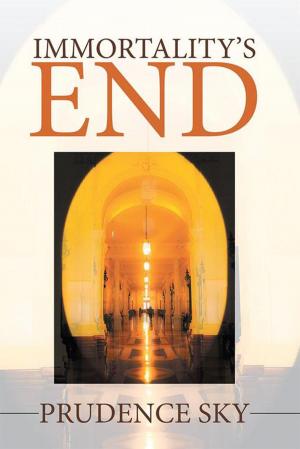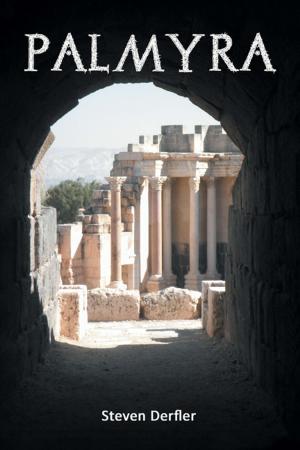| Author: | Wayne Jex | ISBN: | 9781479799671 |
| Publisher: | Xlibris US | Publication: | March 20, 2013 |
| Imprint: | Xlibris US | Language: | English |
| Author: | Wayne Jex |
| ISBN: | 9781479799671 |
| Publisher: | Xlibris US |
| Publication: | March 20, 2013 |
| Imprint: | Xlibris US |
| Language: | English |
These are some of the people I have met in my journeys to Tibet and nearby areas in Asia. The purpose of this book is very simple. It is to connect the person viewing this book to the people of Tibet; from the beggars who came to our camps of foreigners looking for food or a little money, to highly realized Buddhist Lamas. It is to put a human face on Tibet and the issues concerning the Tibetan people. The gaze of most of these people into the camera is direct and unflinching. The eyes communicate to me the pride they have in being Tibetan and in their culture and religion. They communicate strength to me: physical, spiritual, and cultural.
I am hoping that someone picking up this book is either informed about the history of Tibet since 1949, or will be motivated by the book to become more informed about that history and the current situation in Tibet as well as ethnically Tibetan areas. I wont make any political statements myself because I want to eliminate even the possibility of repercussions on any of the people shown because of what I may have said. This is also why I wont give very many names.
A few words about where the photos were taken. The largest number of them were taken at Katog Mardo Tashi Choling, a Buddhist monastery in what was historically the Golok area of Amdo Province of Tibet. It is now part of Qinghai Province of China. I spent 2 months at the monastery in the summer of 2007. The abbot of the monastery is Khentrul Lodro Thaye Rinpoche, who is of the Katog lineage of the Nyingma school of Tibetan Buddhism. He is now a citizen of the United States and I have been a student of his teaching of the Buddhist Dharma since 2004. His website is: https://katogcholing.com/ At the peak,
there were over 80 of Khentrul Rinpoches Western students at his monastery. The main reason I went there was that H. H. Katog Moktsa Rinpoche was going to be giving 5 days of empowerments in August. An empowerment is a ritual in Vajrayana Buddhism which initiates a student into a particular deity practice. Moktsa Rinpoche is one of the five golden throne holders of the Nyingma Katog lineage and is revered as "the Father of Katog Lineage". He is the abbot of Katog monastery in the Kham area of Tibet, (now part of Sichuan Province of China) the mother monastery of Katog Mardo Tashi Choling. Its easy to find out a lot more information about both Rinpoches online so I wont give any more information. Tibetan monks and nuns and lay people also journeyed to see him. I and around 10 other Americans arrived about 5 weeks earlier than the majority of the students and helped arrange things for their arrival and helped teach English in the monastery school.
Rinpoche is an honorific term used in Tibetan Buddhism. It literally means "precious one," and is used to address or describe Tibetan lamas and other high-ranking or respected teachers. This honor is generally bestowed on reincarnated lamas, or Tulkus, by default. In other cases it is earned over time, and often bestowed spontaneously by the teacher's students.
A few photos were taken in 2005 when I journeyed to Tibet to do a pilgrimage, or circumambulation, around Mt. Kailash in western Tibet. We started in Lhasa and drove to Mt. Kailash, visiting the cities of Gyantse and Shigatse along the way. Mt. Kailash is the holiest mountain in Tibet to Tibetan Buddhists and also to Hindus. Hindus consider it to be the home of Shiva, and Tibetan Buddhists believe it is the home of the deity Chakrasamvara. The Bon religion, which predates Buddhism in Tibet, believes it is the seat of all spiritual power. It is also significant in Jainism. There is a pilgrimage route of 32 miles around the mountain. At the time you could drive about a third of the 32 miles, and the rest had to be walked. It is considered more beneficial and meritorious to walk the entire way. The highest poin
These are some of the people I have met in my journeys to Tibet and nearby areas in Asia. The purpose of this book is very simple. It is to connect the person viewing this book to the people of Tibet; from the beggars who came to our camps of foreigners looking for food or a little money, to highly realized Buddhist Lamas. It is to put a human face on Tibet and the issues concerning the Tibetan people. The gaze of most of these people into the camera is direct and unflinching. The eyes communicate to me the pride they have in being Tibetan and in their culture and religion. They communicate strength to me: physical, spiritual, and cultural.
I am hoping that someone picking up this book is either informed about the history of Tibet since 1949, or will be motivated by the book to become more informed about that history and the current situation in Tibet as well as ethnically Tibetan areas. I wont make any political statements myself because I want to eliminate even the possibility of repercussions on any of the people shown because of what I may have said. This is also why I wont give very many names.
A few words about where the photos were taken. The largest number of them were taken at Katog Mardo Tashi Choling, a Buddhist monastery in what was historically the Golok area of Amdo Province of Tibet. It is now part of Qinghai Province of China. I spent 2 months at the monastery in the summer of 2007. The abbot of the monastery is Khentrul Lodro Thaye Rinpoche, who is of the Katog lineage of the Nyingma school of Tibetan Buddhism. He is now a citizen of the United States and I have been a student of his teaching of the Buddhist Dharma since 2004. His website is: https://katogcholing.com/ At the peak,
there were over 80 of Khentrul Rinpoches Western students at his monastery. The main reason I went there was that H. H. Katog Moktsa Rinpoche was going to be giving 5 days of empowerments in August. An empowerment is a ritual in Vajrayana Buddhism which initiates a student into a particular deity practice. Moktsa Rinpoche is one of the five golden throne holders of the Nyingma Katog lineage and is revered as "the Father of Katog Lineage". He is the abbot of Katog monastery in the Kham area of Tibet, (now part of Sichuan Province of China) the mother monastery of Katog Mardo Tashi Choling. Its easy to find out a lot more information about both Rinpoches online so I wont give any more information. Tibetan monks and nuns and lay people also journeyed to see him. I and around 10 other Americans arrived about 5 weeks earlier than the majority of the students and helped arrange things for their arrival and helped teach English in the monastery school.
Rinpoche is an honorific term used in Tibetan Buddhism. It literally means "precious one," and is used to address or describe Tibetan lamas and other high-ranking or respected teachers. This honor is generally bestowed on reincarnated lamas, or Tulkus, by default. In other cases it is earned over time, and often bestowed spontaneously by the teacher's students.
A few photos were taken in 2005 when I journeyed to Tibet to do a pilgrimage, or circumambulation, around Mt. Kailash in western Tibet. We started in Lhasa and drove to Mt. Kailash, visiting the cities of Gyantse and Shigatse along the way. Mt. Kailash is the holiest mountain in Tibet to Tibetan Buddhists and also to Hindus. Hindus consider it to be the home of Shiva, and Tibetan Buddhists believe it is the home of the deity Chakrasamvara. The Bon religion, which predates Buddhism in Tibet, believes it is the seat of all spiritual power. It is also significant in Jainism. There is a pilgrimage route of 32 miles around the mountain. At the time you could drive about a third of the 32 miles, and the rest had to be walked. It is considered more beneficial and meritorious to walk the entire way. The highest poin















